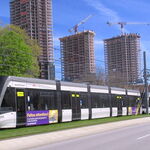The rule of thumb for hourly service is : Trains running hourly in both directions will need to pass each other every half hour.
As of today, there is effectively nowhere for trains to meet west of Bramalea.
So, basically - when a GO train departs westbound from Bramalea, it has to go all the way to Kitchener and then come all the way back before the following GO train can head west from Bramalea.
By timetable it's 1 hour 12 minutes from Bramalea to Kitchener. So, at bare minimum, and allowing even a small margin for turnback at Kitchener, in theory the best that Ml can do is run on headways of about 2.5 hours. That is only possible outside of peak hours - the peak service removes any possibility for that spacing during rush hours.




